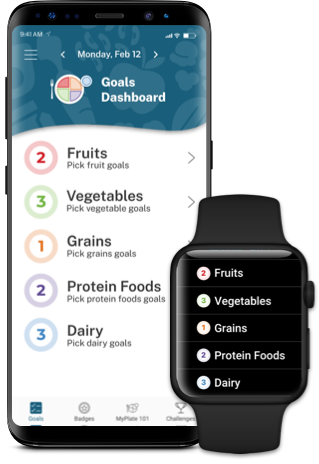Grocery Shopping
Healthy eating is important at every age. Eat a variety of fruits, vegetables, grains, protein foods, and dairy or fortified soy alternatives. When grocery shopping, choose options that are full of nutrients and limited in added sugars, saturated fat, and sodium. Start with these tips:
See what you already have
When starting your grocery list, think about the five food groups—fruits, vegetables, grains, protein foods, and dairy or fortified soy alternatives. Take a look at the foods you already have in your refrigerator, freezer, and pantry and shop for foods you may be missing.
Plan your weekly meals
Write down meals you want to make for the week. Think of creative ways to use some of the items you already have together with some new ones. Strive for a variety of foods in each of the food groups.
Remember the basics
Don’t forget to include foods like fruits and vegetables, which may not be a part of a recipe but are great to have as snacks. Fresh, canned, frozen, dried, and dehydrated all count!
Keep organized for a quick exit
Finish your list by organizing needed items into groups, such as grocery sections or food groups. This helps to stay focused, buy only the items you need, and make a quick exit.
Look around for savings
Save more by using coupons, signing up for your store loyalty programs, buying foods on sale and in-season, or comparing brands and prices. Store brands are usually less expensive.
Read labels
Make the best choice for your needs by comparing nutrition and ingredient information by reading the food label or the Nutrition Facts label. Look for those with less added sugars, saturated fats, and sodium.





